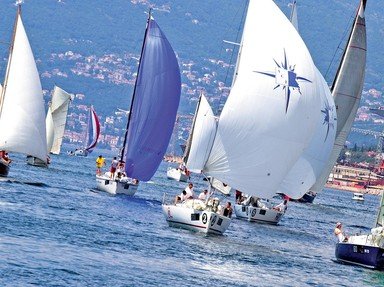Quiz Answer Key and Fun Facts
1. Within the United Kingdom, the organisation charged with the overall governance of all aspects of sailing, boating and leisure water sports is known as the 'RNLI'.
2. The international maritime signal flag, the 'Blue Peter', can be described as which of the following?
3. The large buoys used to denote a safe channel or passage for vessels into and out of a harbour, are painted in which of the following colours?
4. In navigational terms, what ecclesiastical name is given to the buoys placed relative to the four principal compass points that warn of danger?
5. In the United Kingdom and elsewhere, the officer, often a senior retired naval or merchant marine officer, charged with the smooth running of a port is known as the 'Marina Leader'?
6. As you sail into a peaceful cove you notice, to your front, a small boat displaying a flag, white at the hoist and blue at the fly. What important message does this flag indicate to you?
7. Which two colours are used for their high contrasting qualities, in varying pattern combinations, on what are known as the 'cardinal mark' buoys that warn of major dangers to shipping?
8. As you approach a small sailing vessel you notice a number of her crew on deck waving their arms across each other at you. What should your reaction be to this signal?
9. Up goes the cry... Man Overboard! The correct drill, should a member of the crew or a passenger fall overboard, is that the skipper manoeuvres the boat around the person in ever decreasing circles until the boat is close enough to recover the person from the water. Is that statement true or false?
10. Who or what is known as the 'Red Duster'?
Source: Author
SisterSeagull
This quiz was reviewed by FunTrivia editor
gtho4 before going online.
Any errors found in FunTrivia content are routinely corrected through our feedback system.
